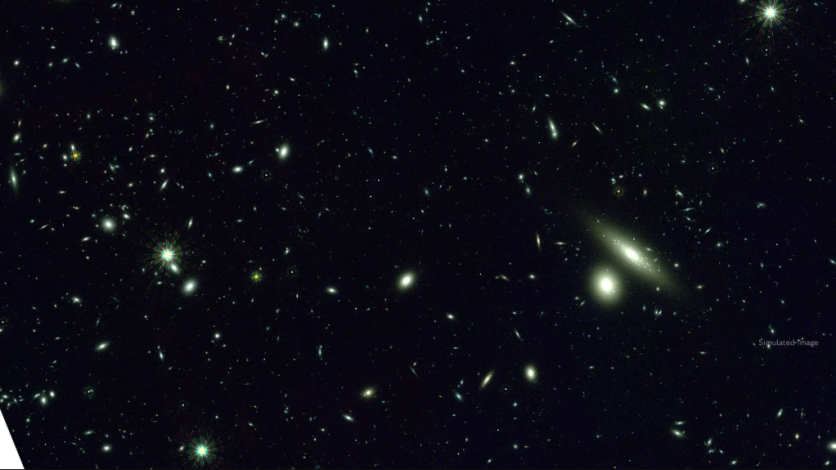NASA's upcoming Nancy Grace Roman Space Telescope has provided us with a cosmic sneak peek as researchers delve into a synthetic universe to gain insights into the real one.
Using the supercomputers at the Department of Energy's Argonne National Laboratory in Illinois, scientists have developed nearly four million simulated images, which offer a breathtaking visualization of the cosmos as the Nancy Grace Roman Space Telescope and the Vera C. Rubin Observatory in Chile prepare to view it.

Simulation of the Vast Universe
Michael Troxel, an associate professor of physics at Duke University, led the simulation campaign and coordinated this effort as part of a larger project called OpenUniverse. The team has shared a 10-terabyte segment of the data, and after processing, an additional 390 terabytes are expected to be released later this year.
According to Katrin Heitmann, deputy director of Argonne's High Energy Physics division, the project utilized the now-retired Theta supercomputer and achieved in nine days what would have otherwise taken around 300 years on a typical laptop.
The outcomes of these simulations are anticipated to guide future efforts by the Roman and Rubin telescopes in exploring dark matter and dark energy, offering scientists an early glimpse of the phenomena they will investigate using telescope data.
According to NASA, this simulation is particularly remarkable for incorporating the performance of the telescopes' instruments, providing the most accurate preview so far of how the Roman and Rubin telescopes will view the cosmos.
The Rubin Observatory is scheduled to commence operations in 2025, with the Roman Space Telescope planned for launch by May 2027. The accuracy of these simulations is vital, as scientists will analyze future data from these observatories to identify small features that could help solve significant cosmological mysteries.
Roman and Rubin's Hunt for Dark Energy
Both Roman and Rubin will study dark energy, the force believed to be driving the accelerated expansion of the universe. According to NASA, by understanding the distinctive signatures each instrument leaves on the images and refining data processing methods now, scientists hope to achieve significant discoveries even from subtle signals.
OpenUniverse aims to establish realistic expectations for what can be uncovered with these telescopes. According to Jim Chiang, a staff scientist at DOE's SLAC National Accelerator Laboratory, it allows scientists to test their processing methods, improve their analysis tools, and accurately interpret results.
This groundwork is crucial for effectively utilizing real data once it becomes available. Ongoing simulations will help researchers explore the effects of physics and instruments that might mimic what the telescopes observe.
Conducting such an extensive simulation required a large and skilled team from multiple organizations. This collaboration between the DOE, Argonne, SLAC, and NASA brought together the necessary expertise and resources.
As the Roman and Rubin telescopes begin their observations, the project will continue to evolve, using the new data to make simulations even more precise.
The Roman and Rubin simulations observe the same region of the sky, covering approximately 0.08 square degrees, about a third of the area of a full moon. Later this year, a complete simulation set will be released, expanding to 70 square degrees, equivalent to the area covered by 350 full moons.
Related Article : NASA Roman Space Telescope's Eyes Are One Step Closer in Peering Through the Galaxy's Mysteries

ⓒ 2025 TECHTIMES.com All rights reserved. Do not reproduce without permission.




